Natasha L. sent in another example of stereotypes tied to nationality/region in the form of a set of comical visual distinctions between “Westerners” and “Asians,” found here, by an artist named Yang Liu. [Note: Natasha and I both assume they’re supposed to be comical or even satirical, particularly of the way that non-Western countries are generally stereotyped as being less professional, less punctual, less rational, and so on, though we might be wrong.] Some examples:
“Opinion”:
“Punctuality”:
“Traveling”:
“In the Restaurant”

“Queue when Waiting”

Regardless of the artist’s intent (whether they’re supposed to be satires of this type of thinking, etc.), I’m sure many people will laugh and see some elements of truth to some of the images. But I’m betting you could tell people they represent almost any set of nationalities and people would also laugh and say “OMG, it’s totally true!” It’s Germany and Spain! It’s the U.S. and Mexico! It’s Venezuela and Greece! You could also probably change this to “men” and “women” and get the same reaction. It’s the stereotypical categorization we think is funny–the idea that groups of people are systematically different, whether it’s based on gender, class, race, nationality, region within a country, and so on (particularly if these differences might lead to sitcom-like hijinx and misunderstandings!).
For a fun little activity to get across the way in which stereotypes are inconsistent and meaningless, you might present these images, not tell your students what they’re supposed to represent, and ask them what groups they think are being portrayed (either out loud or in writing), then use their guesses, which will probably vary widely and draw on lots of different human categories such as class, gender, race, and so on, to talk about stereotyping (which may or may not be negative, of course) and how little we pay attention to what the actual contents of our stereotypes are. Another good example of this would be the way that ethnic groups are often defined as having uniquely loud and boisterous families–I think of it as the “My Big Fat Greek Wedding” syndrome. Well, if Italians, Irish, Greeks, Jews, Russians, Mexicans, Spaniards, Chinese, people from the Southern U.S., New Yorkers, etc. etc. etc., all have big loud families…doesn’t that kind of indicate that lots of families are just big and loud, regardless of background?
Thanks, Ashley and Natasha!
NEW! Robin sent in a link to an article in the Guardian about a Czech artist who pulled off a hoax by creating a set of sculpture that represent stereotypes of various European countries, which he said were created by 27 different artists.
Romania
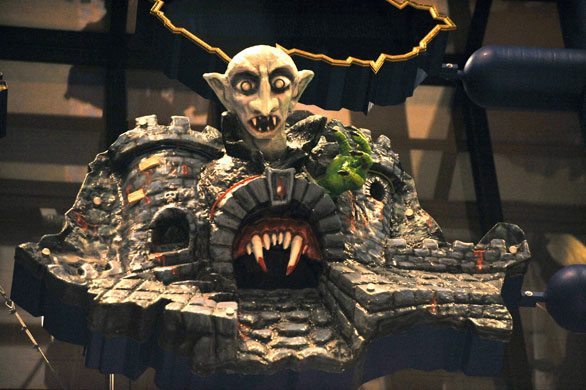
Luxembourg is made of gold…and is for sale:
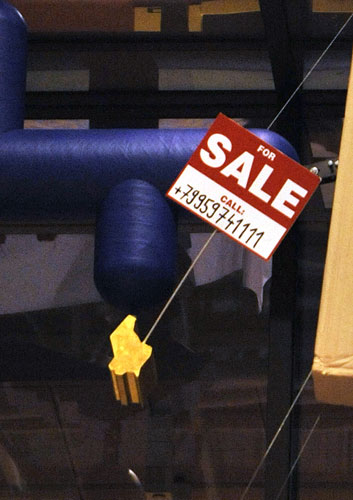
Poland has priests raising a rainbow flag. I didn’t know if the rainbow flag has the same association with gay rights in Poland as it does here, but Spiegel Online says it’s a gay pride flag:

Bulgaria is apparently supposed to be the floor of a urinal, though Spiegel Online says it’s a Turkish toilet, apparently also called a squat toilet:
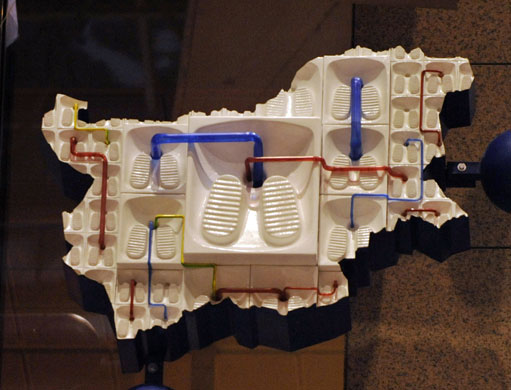
Bulgaria’s not happy about it and has demanded the sculpture be taken down.
Holland has been flooded, but minarets stick out of the water to remind us about increasing concerns expressed by many Dutch about the Muslim community in the Netherlands since tension increased after the Mohammad cartoon incident:

There is ongoing debate about whether this image of Germany, showing the country’s many autobahns, is supposed to look like a swastika:
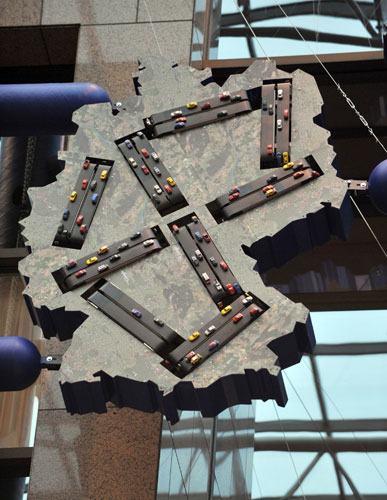
And of course France has a large banner that says “Strike!”
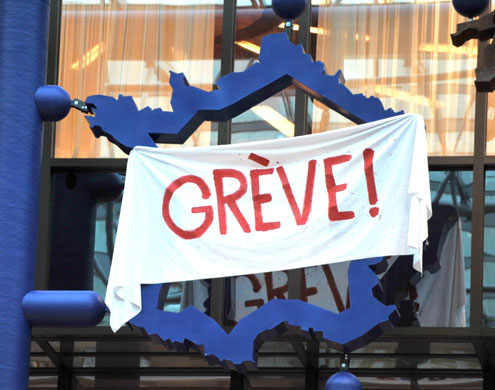
Apparently Great Britain was represented simply as a blank space.




Comments 12
Lilaenne — January 12, 2009
I don't think the mood meter is as much about the people of each region as it is about the food in that restaurant - in other words, since Asian food is so Weird and Different, that's what you should order if you're in an adventurous mood. It's still using stereotypes to sell their product, just not in the same way.
Patricia — January 12, 2009
I've seen this Asia/West series of pics floating around the internet and the information I had was that it comes from a woman who has lived in both Germany and Japan (I could be mistaken as to the Asian country) and she did this series to point out the differences she noticed in German vs Japanese culture.
So I think she just intended to highlight general cultural differences in a quirky manner.
Ranah — January 12, 2009
The "opinion" one is definitely japanese and is connected to the way they try to diplomatically express their opinion, showing too much respect to everyone. You'd never hear a straight "no", instead the answer would be something like what's displayed on the graphic. It's not connected to thinking itself, but rather, to the way you are expected to talk and explain your thinking.
The rest don't call such a straight memory from me - the extensive use of cameras when travelling has spread too much to attach it to asians or any other country or race.
Marcello — January 12, 2009
I know it may look like a lame comment and add little to the conversation, but i was thinking exactly what Lilaenne said.
Marcello
Rob — January 12, 2009
I agree that the mood meter isn't about racial stereotypes, it's saying that you need to be "adventurous and spirited" to order Asian food while American food is comfortable and relaxing. No idea what "upbeat and passionate" means for Mediterranian though. Maybe they just needed a third description and couldn't think of anything relavent?
Elena — January 12, 2009
I've got no idea what they meant as "Mediterranean". Do you get to order gazpacho as entrée and moussaka as the main dish with a side order of tabbouleh and pannacotta for dessert?
dominika — January 13, 2009
the series of chinese/german comparisons is actuallu quite funny. i saw them all, and some are really not about stereotypes but cultural differences, which, encountered while travelling, may give you culture shock - like the manner of queuing.
and i also noticed the portrayal of all non-american families as loud and collective, funny
Someone — January 14, 2009
Do you think it's problematic that the study of sociology is so left biased?
Are you politically incorrect? « A possie in Aussie — January 15, 2009
[...] found these politically incorrect (and funny) images at Sociological images: seeing is believing (thanks for the tip, [...]
timeismine — January 16, 2009
The family thing is similar to the way that each new wave of immigrants to America has gotten labeled with the same traits -- lazy, violent and drunken, primarily. Well, the booze changes each time anyway! (Whiskey, Vodka, Tequila...)
It ties pretty tightly to class issues, too, though.
jay — September 20, 2009
I am a westerner who has lived in Asia for 20 years. I love Asia, but I also see the very different cultural values. These images are very true and are not simplistic stereotypes.
eggialpha — February 3, 2010
I made my response here:
http://buburuza.net/2008/12/culture-east-vs-west/comment-page-4/#comment-12059
I think we often forget how ethnocentric we are, especially in terms of culture, and everyone who thinks it's "very accurate" thinks so because they agree with the "Western" point of view looking at "foreign" "Eastern" cultures.
What bothers me the most is the subtle (or not so subtle) notion that Western cultural norms are sensible and effective, while Eastern ones are disorganized and absurd, that shows in many of these illustrations.